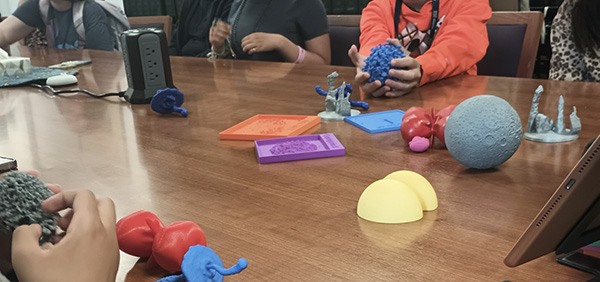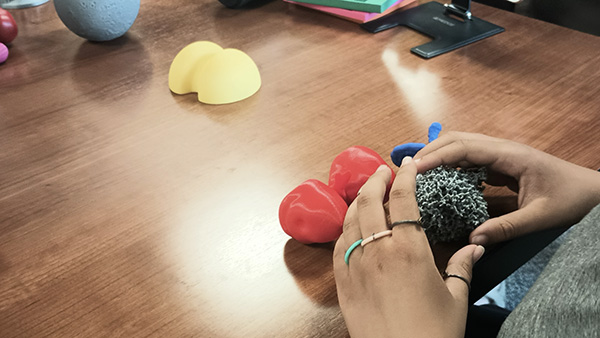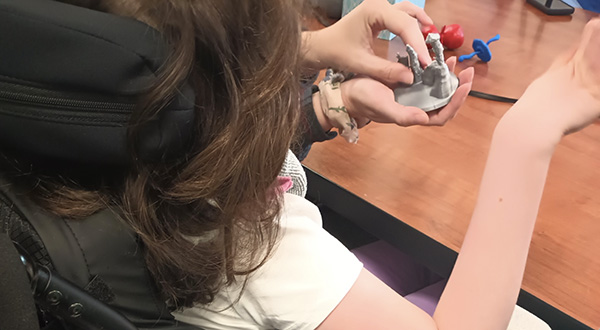The Universe Within Reach: NASA Universe of Learning Visits Perkins School for the Blind
On May 16, 2025, learners at the Perkins School for the Blind Library in Massachusetts had the chance to feel the universe—literally.
In a special day-long event hosted by Nance Wolk of the Chandra X-ray Center, and part of NASA’s Universe of Learning team, nearly 50 attendees explored the cosmos through touch and sound.

How is that possible? In recent years, NASA’s science missions have developed ways to translate data from its telescopes in space into formats that can be explored using different senses. NASA’s Chandra X-ray Observatory, which has its headquarters in Cambridge, MA, is one of missions that leads this effort. Chandra is also a member of NASA’s Universe of Learning, which aims to deliver content to learners in innovative and engaging ways.
The “Explore the Universe” library program at the Perkins School featured a unique blend of tactile and auditory experiences designed to make space science more accessible and engaging for all learners.
Over four immersive, hour-long sessions, students interacted with NASA astrophysics data from its fleet of telescopes including Chandra, Webb, and Hubble, in new ways. Attendees listened to or held vibrating speakers to sense the pulsing patterns of, celestial sonifications—translating data from black holes and supernovae into sound. They used their sense of touch to examine 3D printed models of astronomical objects like stellar nurseries and pulsars, and used tactile plates to learn about different features of these objects. The attendees also had access to Braille boards and other tools to understand the life cycle of stars. The activities helped illuminate complex astrophysics concepts through a multimodal approach.
“Providing access to NASA science isn’t just about providing information—it’s about creating meaningful, interactive experiences,” said Wolk. “These learners are curious explorers, and we’re honored to help bring the universe to people in ways that hopefully resonate.” In addition to the hands-on learning, Perkins received multiple copies of the Mini Star Kit—a library-friendly resource developed by the NASA’s Universe of Learning team and disseminated to state libraries nationwide in partnership with the Library of Congress. The kits contain multimodal materials that brings the lives of stars to light.
“It’s deeply meaningful to witness how multisensory tools can open doors to our universe,” said Dr. Kimberly Arcand, visualization scientist and communications lead for NASA’s Chandra X-ray Observatory and co-investigator of NASA’s Universe of Learning at the Smithsonian Astrophysical Observatory. “Events like this at Perkins remind us that space belongs to everyone— and that science data can be shared in ways that work with how people learn and experience the world around them.”
Through tools like 3D models, sonification, and tactile materials, programs like this help ensure that learners across the United States can engage directly with NASA data and explore the mysteries of our universe for themselves.




